Melobest 2.5 mg for Dogs: Complete Guide to Pain Relief, Dosage, and Veterinary Use
Melobest 2.5 mg is a veterinary-grade non-steroidal anti-inflammatory drug (NSAID) containing Meloxicam, a potent and selective COX-2 inhibitor. Effective in treating pain and swelling in dogs related to osteoarthritis, skeletal disorders, soft tissue trauma, and recovery post-surgery.
This comprehensive guide explores Melobest 2.5 mg for dogs, covering its indications, mechanism of action, benefits, administration guidelines, dosage table, clinical data, side effects, and veterinary considerations.
What is Melobest 2.5 mg for Dogs?
Melobest 2.5 mg is an oral tablet formulation of Meloxicam, designed for canine use. Meloxicam is well-established in veterinary medicine due to its long-lasting analgesic and anti-inflammatory effects. The 2.5 mg strength is ideal for precise dosing in small to medium breed dogs.
Active Ingredient:
- Meloxicam 2.5 mg per tablet
Form:
- Oral tablet
Pharmacological Class:
- NSAID (Non-Steroidal Anti-Inflammatory Drug)
Indications for Use
1. Osteoarthritis (OA)
- Chronic degenerative joint disease in older dogs
- Helps restore mobility and quality of life
2. Musculoskeletal Disorders
- Lameness
- Hip dysplasia
- Muscle and ligament injuries
3. Post-Operative Pain
- Soft tissue surgery (e.g., spaying, neutering)
- Orthopedic surgery
4. Soft Tissue Inflammation
- Abscesses
- Skin injuries or swelling
- Ear infections (inflammatory pain)
5. Traumatic Injuries
- Road accidents
- Falls
- Contusions
Melobest 2.5 mg provides symptomatic relief, particularly where chronic or acute inflammation reduces a dog’s mobility and comfort.
How Does Melobest Work?
Melobest acts by inhibiting the cyclooxygenase-2 (COX-2) enzyme, which is responsible for producing prostaglandins that mediate pain, inflammation, and fever.
Mechanism of Action:
- Selectively blocks COX-2
- Reduces prostaglandin synthesis
- Suppresses inflammation where the injury or pathological condition exists
- Provides sustained pain relief with once-daily dosing
This COX-2 selectivity makes Melobest safer on the gastrointestinal tract compared to non-selective NSAIDs.
Benefits of Melobest 2.5 mg
- Targeted Pain Relief: Rapid onset of action within hours.
- Anti-inflammatory Action: Reduces swelling and stiffness.
- Convenient Dosing: Once daily due to long half-life (~24 hours).
- Improved Mobility: Especially in arthritic dogs.
- Veterinary Recommended: Backed by clinical trials and practice.
Administration Method and Dosage Schedule for Melobest 2.5 mg in Dogs
Melobest 2.5 mg (Meloxicam) is a non-steroidal anti-inflammatory drug (NSAID) that must be administered with precision to ensure maximum effectiveness and safety. Dosage should always be based on the dog’s body weight and administered under veterinary supervision.
General Dosage Guidelines
Melobest is typically administered once daily due to its long half-life. Treatment generally begins with a loading dose on Day 1, followed by a reduced maintenance dose from Day 2 onward.
Standard Dosing Schedule
| Day | Dosage |
| Day 1 (Initial/Loading Dose) | 0.2 mg/kg body weight once orally |
| Day 2 and beyond (Ongoing Dose) | 0.1 mg/kg once every 24 hours |
Melobest 2.5 mg Dosage for Dogs
| Dog’s Body Weight (kg) | Initial Dose (0.2 mg/kg) – Day 1 | Maintenance Dose (0.1 mg/kg) – From Day 2 | Melobest 2.5 mg Tablet Equivalent |
| 2 kg | 0.4 mg | 0.2 mg | 1/6 tablet |
| 4 kg | 0.8 mg | 0.4 mg | 1/6–1/4 tablet |
| 6 kg | 1.2 mg | 0.6 mg | 1/2 tablet |
| 8 kg | 1.6 mg | 0.8 mg | 2/3 tablet |
| 10 kg | 2.0 mg | 1.0 mg | 4/5 tablet |
| 12 kg | 2.4 mg | 1.2 mg | ≈1 tablet |
| 15 kg | 3.0 mg | 1.5 mg | 1 + 1/5 tablets |
| 20 kg | 4.0 mg | 2.0 mg | 1 + 3/5 tablets |
| 25 kg | 5.0 mg | 2.5 mg | 2 tablets |
| 30 kg | 6.0 mg | 3.0 mg | 2 + 2/5 tablets |
| 35 kg | 7.0 mg | 3.5 mg | 2 + 4/5 tablets |
| 40 kg | 8.0 mg | 4.0 mg | 3 + 1/5 table |
Note: Dosages must be accurately calculated using your dog’s current weight. Overdosing can cause gastrointestinal or kidney damage.
How to Administer Melobest 2.5 mg
- Give Orally: Tablets can be administered with or without food. If your dog has a sensitive stomach, administering with food is preferred.
- Same Time Each Day: For consistent pain control, administer at the same time daily.
- Ensure Full Dose Is Swallowed: You can crush the tablet and mix it with a small amount of tasty food if necessary.
- Use a Pill Cutter: For doses requiring ¼ or ¾ tablets, use a pill cutter to ensure accurate division.
- Monitor for Improvement: Look for changes in mobility, pain levels, or behavior, usually noticeable within 2–3 days of starting therapy.
Special Dosing Considerations
- Elderly Dogs: May require lower maintenance dose and more frequent monitoring.
- Chronic Therapy: Regular blood work (liver, kidney function) is recommended every 3–6 months.
- Surgical Use: For post-operative pain, a single dose 1–2 hours before surgery may be administered as per vet advice.
- Switching from Other NSAIDs: Always observe a “washout period” of 5–7 days to avoid overlap toxicity.
Do NOT:
- Do not exceed the prescribed dose.
- Do not give alongside other NSAIDs (e.g., carprofen, firocoxib) or corticosteroids (e.g., prednisone).
- Do not split tablets in advance for future use unless instructed (split tabs may degrade faster).
Key Tips for Pet Owners
- Always consult your vet before starting, stopping, or adjusting the dose.
- Observe for side effects such as vomiting, diarrhea, or behavioral changes, especially during the first week.
- Do not reuse leftover tablets for another dog without veterinary approval.
Safety Profile and Side Effects of Melobest 2.5 mg for Dogs
Melobest 2.5 mg (Meloxicam) is generally considered safe and well-tolerated in dogs when administered at the recommended dose and under veterinary supervision. However, like all non-steroidal anti-inflammatory drugs (NSAIDs), it can cause adverse effects, especially with prolonged use, overdose, or in dogs with underlying health conditions.
Common Side Effects (Usually Mild and Transient):
These are typically seen early in therapy and may resolve on their own:
- Vomiting
- Diarrhea
- Loss of appetite
- Soft stool
- Lethargy or mild depression
These mild effects are often temporary and can be reduced by administering Melobest with food.
Less Common or Serious Side Effects:
These require immediate veterinary attention:
- Gastrointestinal ulcers
(signs: blood in vomit or stool, black tarry feces) - Kidney dysfunction or failure
(signs: increased thirst/urination, vomiting, weight loss) - Liver enzyme elevation or liver toxicity
(signs: jaundice, abdominal pain, vomiting) - Anemia or clotting disorders
(signs: pale gums, bruising, bleeding)
Risk Factors That Increase Side Effects:
- Pre-existing kidney or liver disease
- Dehydration
- Use with other NSAIDs or corticosteroids
- Incorrect dosing or long-term use without monitoring
- Age extremes (very young or very old dogs)
Safety Monitoring Recommendations:
When administering Melobest 2.5 mg to dogs over a prolonged duration:
- Regular blood tests (renal and hepatic panels)
- Monitoring body weight and hydration status
- Watch for GI signs or changes in behavior
Contraindications – When NOT to Use Melobest 2.5 mg:
- Dogs younger than 6 weeks
- Dogs with active GI bleeding or ulcers
- Dogs with renal or hepatic impairment
- Dogs with known hypersensitivity to Meloxicam
- Concurrent use with other NSAIDs or corticosteroids
- Pregnant or lactating dogs (use only if advised by a vet)
Signs of Overdose (Toxicity Symptoms):
- Profuse vomiting or diarrhea
- Blood in vomit or stool
- Seizures
- Weakness or collapse
- Lethargy progressing to coma
If overdose is suspected, seek immediate veterinary care. Treatment may involve IV fluids, activated charcoal, gastroprotectants, and monitoring of kidney/liver function.
Veterinary Insights:
Melobest’s COX-2 selectivity reduces the likelihood of serious GI complications compared to older NSAIDs, but routine monitoring remains essential. Many veterinarians use it safely even in long-term arthritis management, provided dogs are well-hydrated and periodically evaluated.
Clinical Research and Veterinary Observations
Several clinical studies support the efficacy and safety of Meloxicam in dogs.
Study 1: Meloxicam in Osteoarthritis
- 80 dogs treated for 4 weeks
- Improved mobility in 71%
- Significant pain reduction (p < 0.05)
- Minimal side effects
Study 2: Post-Surgical Use
- 40 dogs post-orthopedic surgery
- Meloxicam reduced swelling and improved pain scores
- No adverse GI reactions noted with correct dosing
Veterinary Observations
- Ideal for long-term use in arthritis
- Well tolerated in senior dogs
- Fewer gastrointestinal issues compared to non-selective NSAIDs
Overdose Management
Signs of Overdose:
- Vomiting blood
- Bloody stools
- Excessive lethargy
- Seizures
What to Do:
- Seek immediate veterinary care
- Activated charcoal or IV fluid therapy may be required
Veterinary Tips for Best Use
- Consistency matters: give the medication at the same time daily.
- Begin conservatively: use the lowest dose that achieves the desired effect.Use in combination: Pair with joint supplements like glucosamine/chondroitin if chronic arthritis is present.
- Educate pet parents: Watch for any unusual signs or behaviors.
Conclusion
Melobest 2.5 mg for dogs is a highly effective, safe, and veterinary-trusted solution for managing pain and inflammation in a variety of conditions—from post-surgical recovery to chronic joint disorders. Melobest 2.5 mg offers a reliable and veterinarian-recommended option for effectively managing pain and inflammation in dogs, especially those suffering from osteoarthritis, post-operative discomfort, or musculoskeletal injuries. Its active ingredient, Meloxicam, is well-researched and widely trusted for its selective COX-2 inhibition, ensuring powerful anti-inflammatory action with minimal gastrointestinal side effects when used appropriately.







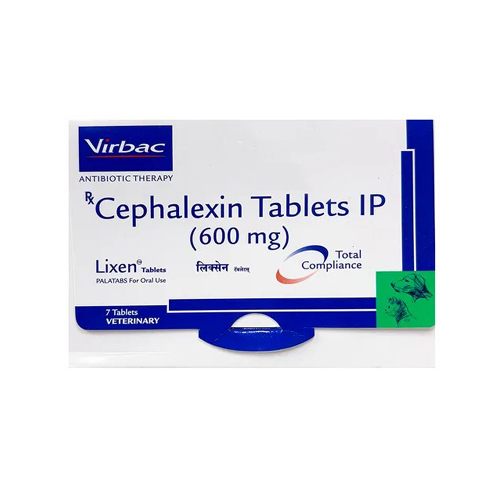
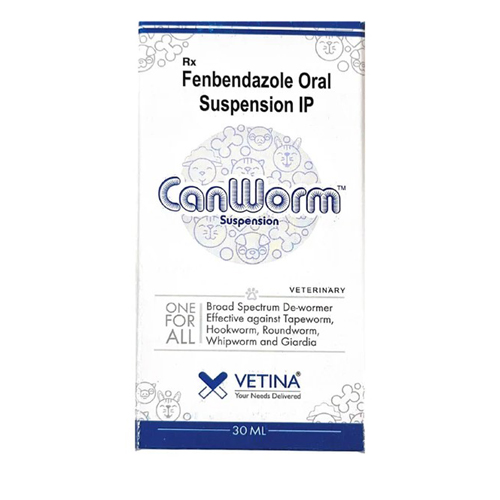



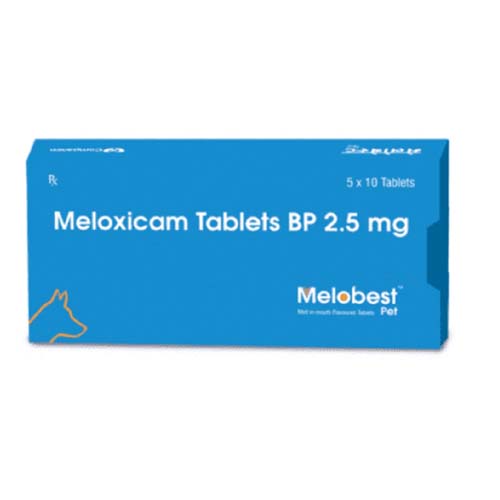

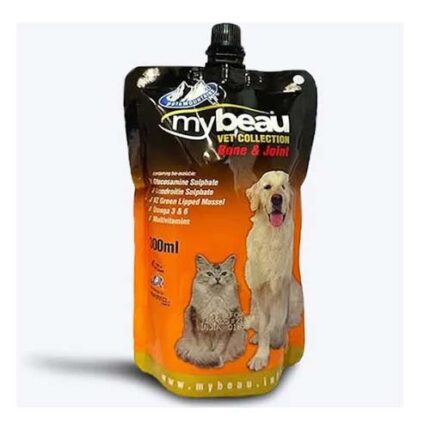
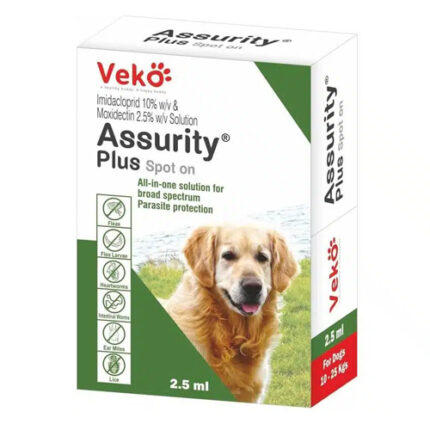
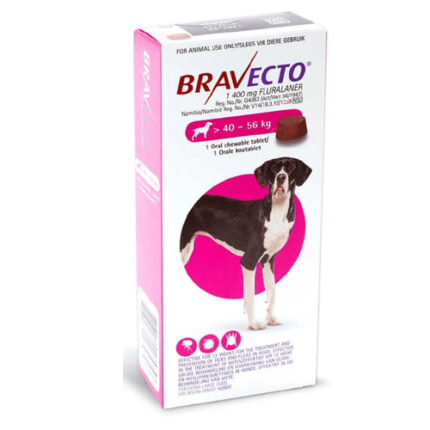
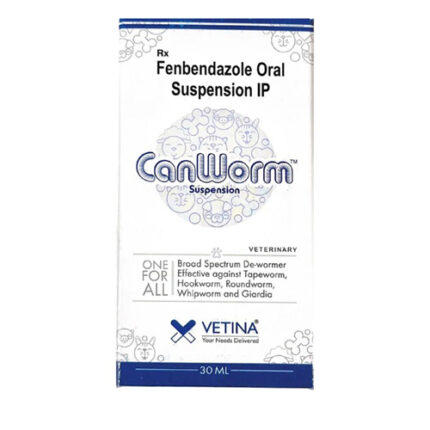
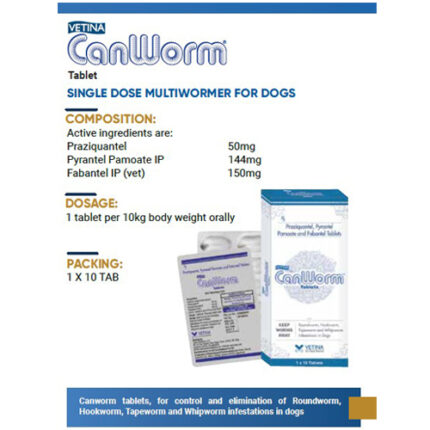


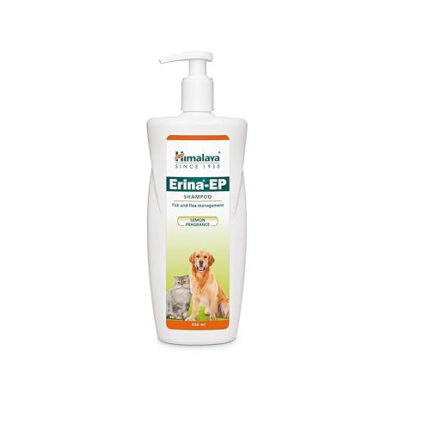
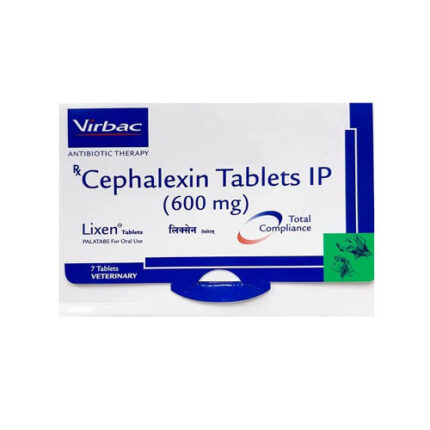
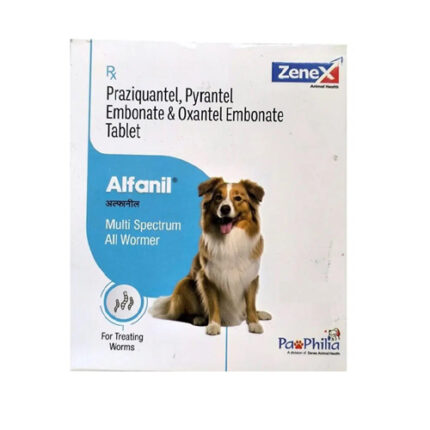
Reviews
There are no reviews yet.